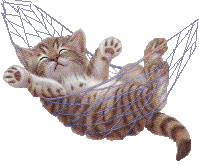UA - 47062478 - 1
"Success is not the result of spontaneous combustion. You must set yourself on fire."
Exercising - No Gym
Not everyone can or wants to go to a gym for working out. If you are home, or away from home....not to worry! Can you lift a weight? How about a smart phone (cell phone)? You're stronger than you thought so now is the time to focus on exercising. Remember, it's the best medicine you can take, it's cheap, not very time consuming, and helps preserve good health.
If you can get out of bed, visit the toidy, and walk to your breakfast table without shortness of breath you have no excuses not to work out. If you are overweight, your first exercise is to push yourself away from your table after eating a smaller portion than you're used to. Also keep the portions no larger than your fist. You should also consult this blog on diet information and also attend Google University (the Internet) on nutrition, diet, and fitness information. If you are in really bad shape, consult with your doctor and see what he recommends relative to exercising and diet control.
There are certain principles you should follow if you plan to structure an exercise program without help from a trainer or knowledgeable person trained in exercising. They are listed below and not necessarily in order of importance:
- Rather than look at a book for pictures of how to perform any exercise, check out an online video for descriptions, before and after views on each exercise, and the author's comments.
- Videos help you to follow the form, rhythm, and sequence of an exercise program.
- Videos are available for your desktop, laptop, tablet, and/or smart cell phones that are much better than viewing photos or drawings in a book.
- Try to include the major muscle groups in any exercise program. They are chest, back, abs, legs, arms and shoulders..
- Work out on core exercises, balance, stretching, and aerobics if you can.
- Don't expect exercise to lose weight. Look to an intelligent diet you can follow and include exercising to maintain your muscles in good condition. If you only diet and not exercise you can lose weight, including fat and muscle - not good, McGee! Save the muscles for later. You'll need them!
Some sites you may want to visit for help in setting up an exercise routine are:
- Ace Fitness Programs with 25 exercises.
- The Huntington Post Crash Course of Exercising at Home.
- The No-equipment Workout You Can Do At Home (www.Oprah.com).
- wiki How to Exercise (has a very good description of various exercises).



